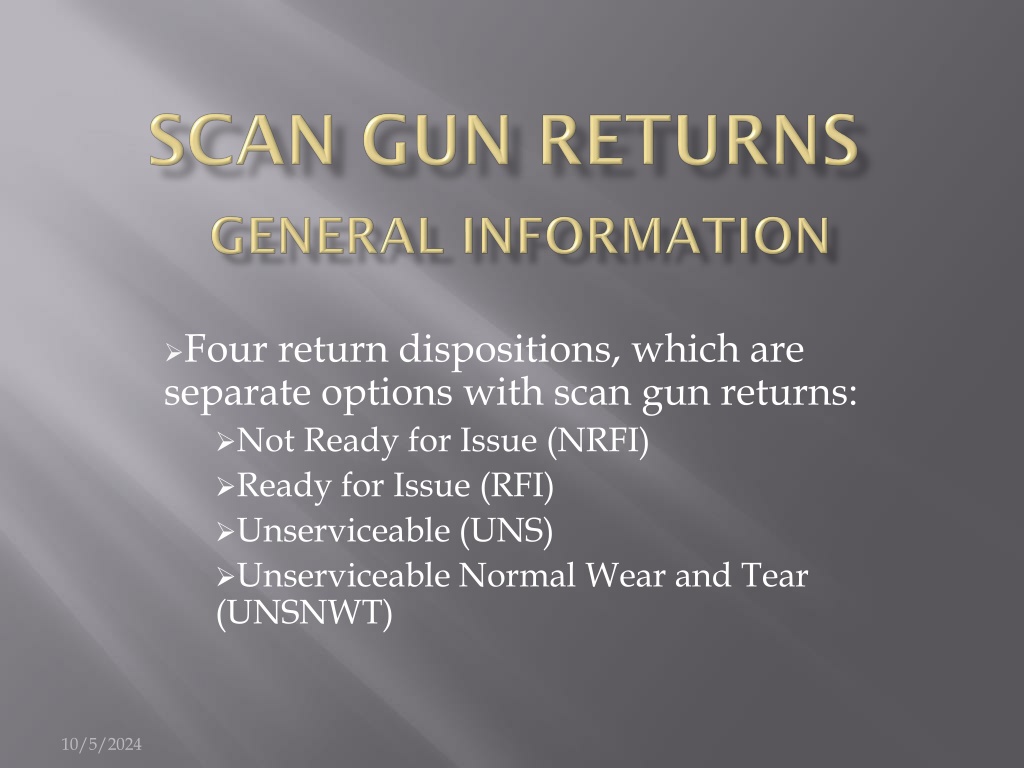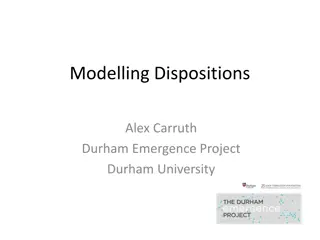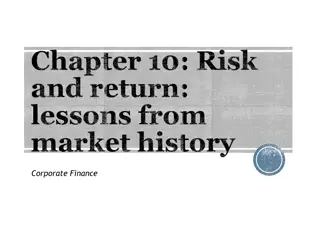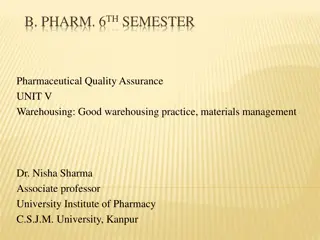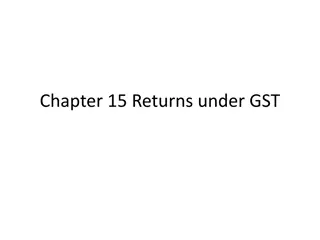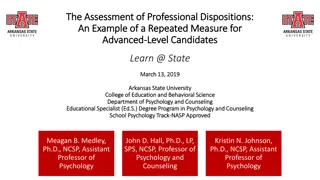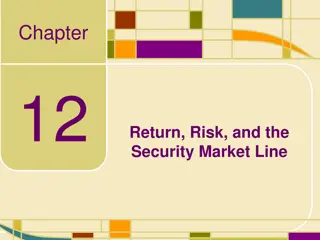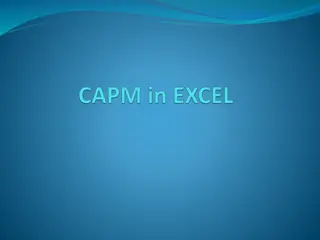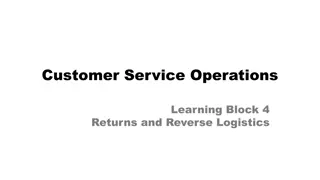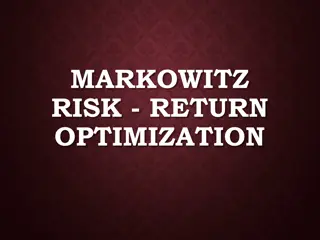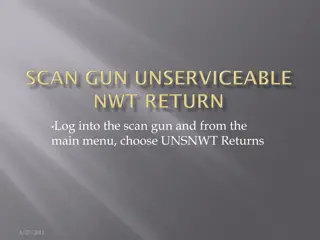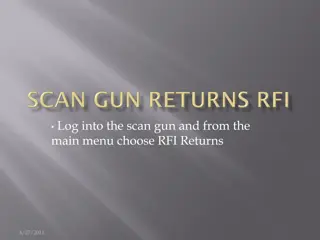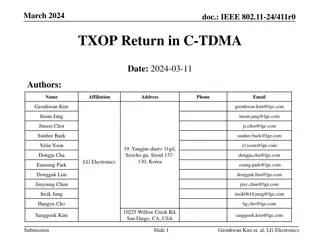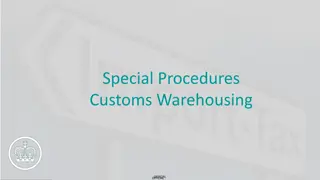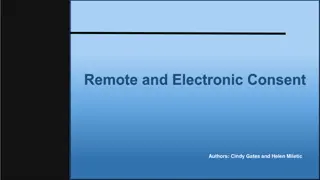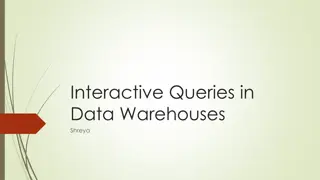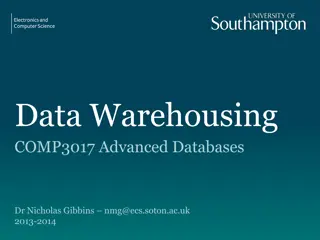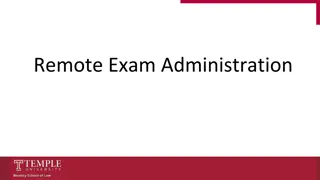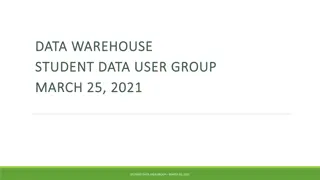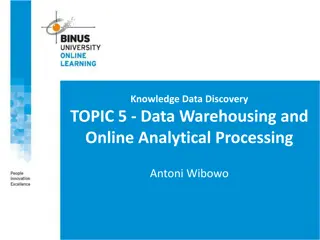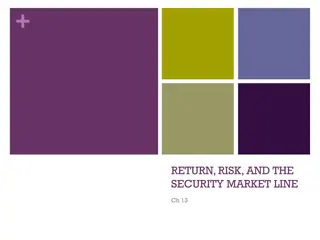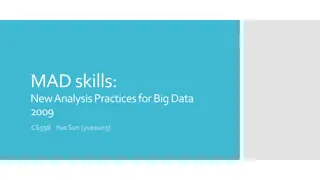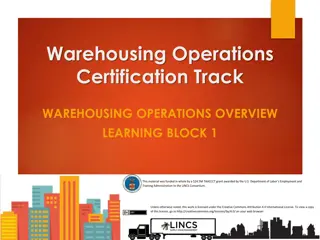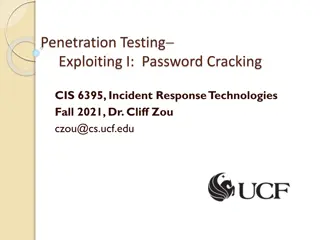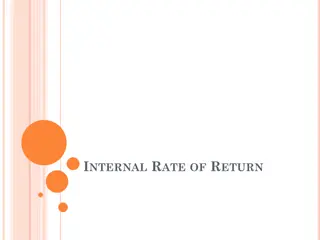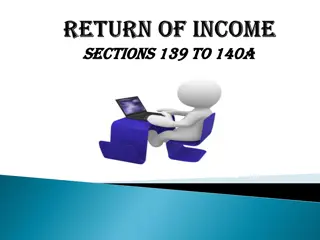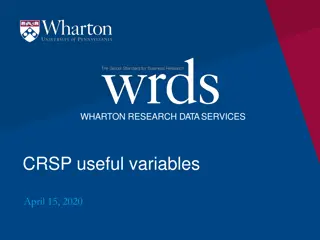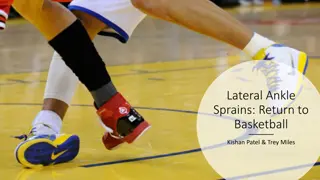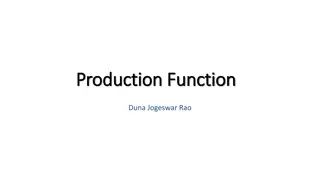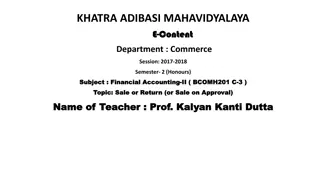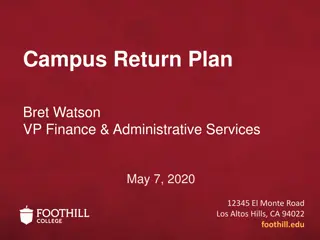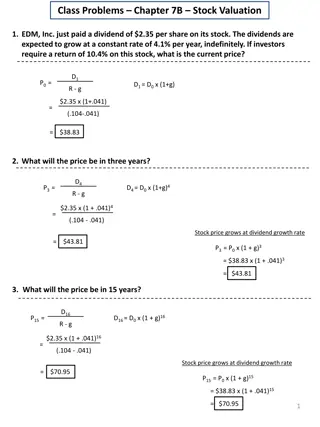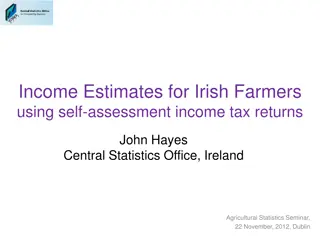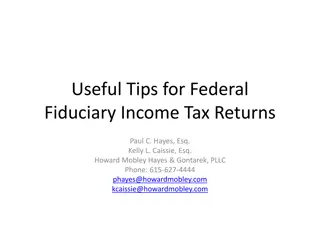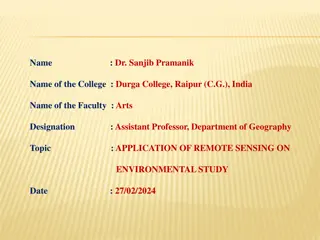Understanding Return Dispositions and Remote Returns Process in Warehousing
Explore the concept of return dispositions like NRFI, RFI, UNS, and UNSNWT in warehouse management, along with insights into Remote Returns Process (RRP) nodes and Non-RRP nodes. Learn about Regular Returns, LPNs, and the choice between consolidating returns with LPNs for efficiency. Understand the process for RFI and NRFI returns in both RRP and Non-RRP nodes, highlighting the difference in handling tasks.
Uploaded on Oct 05, 2024 | 0 Views
Download Presentation

Please find below an Image/Link to download the presentation.
The content on the website is provided AS IS for your information and personal use only. It may not be sold, licensed, or shared on other websites without obtaining consent from the author. Download presentation by click this link. If you encounter any issues during the download, it is possible that the publisher has removed the file from their server.
E N D
Presentation Transcript
Four return dispositions, which are separate options with scan gun returns: Not Ready for Issue (NRFI) Ready for Issue (RFI) Unserviceable (UNS) Unserviceable Normal Wear and Tear (UNSNWT) 10/5/2024
Remote Returns Process (RRP) node: Configured as a RRP node when the returns warehouse is physically separated from the main warehouse Non-Remote Returns Process (Non-RRP) node: Used in most caches The returns area is within the main cache/ warehouse building 10/5/2024
RRP vs. Non RRP node RRP (Remote Return Process node): move tasks aren t automatically generated on a RFI return Non-RRP (Normal Return Process node): move tasks are automatically generated, on both a RFI and Non RFI return Non-RRP Caches: MNNEK KYSAK AZPFK CALSK CANCK CORMK RRP Caches: IDGBK MTNRK IDCDK ORNWK NMSFK AKAKK ORLGK WAWFK 10/5/2024
Regular Returns and LPNs Regular Return: Can be used for both RFI and NRFI returns in a RRP and Non-RRP node. LPN (License Plate Number): Can be used for both RFI and NRFI returns in an RRP and Non-RRP node. LPN is an abbreviation for License Plate Number. An LPN is a virtual grouping of several items, which allows us to do mass transactions. In our case LPN can be used during a RFI or NRFI return. Once an LPN is created, any transaction performed on an LPN consolidates all the items it holds, thus avoiding the need to re-scan the items a second time for movement to refurb zone/storage. 10/5/2024
Which to use? LPN choice consolidates a return into the LPN, therefore, doing away with the need to scan the returned items a second time in the Refurb-RFI zone in a RRP node. But, you cannot move 50 like items at a time, that you have been holding from a number of returns. For example: 50 Pulaski's have been returned on 5 different returns. These have been held at the returns warehouse to be ad-hoc moved to the storage location. With LPN, each Pulaski return would need to be moved as part of 5 separate LPN s. Each LPN would need to be moved separately, therefore negating the ability to physically consolidate like items into 1 Ad- Hoc move. 10/5/2024
For a regular RFI return, in a RRP node, the items would need to be ad-hoc moved from the return zone Refurb-RFI to the respective storage locations. In a Non RRP node, putaway tasks are created upon the RFI return from the RFI-1 zone. For an NRFI regular return, move tasks are created to move the item(s) to their respective refurbishment locations in both the RRP and Non RRP nodes. 10/5/2024
Using an LPN cancels the put away task in a Non RRP node for a RFI return. Trackable Return: The user can return a trackable item NRFI, RFI, UNS and UNSNWT using either a LPN or a Regular Return. The return steps are the same, but a Trackable ID entry is required. Each cache will probably need to determine which method it will use for a trackable return. 10/5/2024
Regular Return LPN (License Plate No.) LPN is not used with a UNS return RRP The regular return process is used, since it is not necessary to create any move task with UNS supplies. Non-RRP (normal) The regular return process is used, since it is not necessary to create any move task with UNS supplies. LPN is not used with a UNS return 10/5/2024
Regular Return The regular return process is used, since it is not necessary to create any move task with UNSNWT supplies. LPN (License Plate No.) LPN is not used with a UNSNWT return RRP Non-RRP (normal) The regular return process is used, since it is not necessary to create any move task with UNSNWT supplies. LPN is not used with a UNSNWT return 10/5/2024
Regular Return Auto move tasks are generated upon NRFI return LPN (License Plate No.) LPN cancels the move tasks of a regular return, consolidates items and creates an ad-hoc move. There isn t any benefit to speak of, in using LPN with a NRFI return. LPN cancels the move tasks of a regular return, consolidates items and creates an ad-hoc move. There isn t any benefit to speak of, in using LPN with a NRFI return. RRP Non-RRP (normal) Auto move tasks are generated upon NRFI return. 10/5/2024
Regular Return Ad hoc move tasks from Refurb-RFI zone Can physically consolidate a number of like returned items into 1 Ad-Hoc move LPN (License Plate No.) Consolidates all RFI items at Refurb-RFI zone No need to re-scan all items at Refurb RFI zone when moving to storage Move all LPN s individually to storage. RRP Non-RRP (normal) Auto move tasks created from RFI-1 zone to storage Auto move tasks are cancelled upon creation of LPN 10/5/2024
